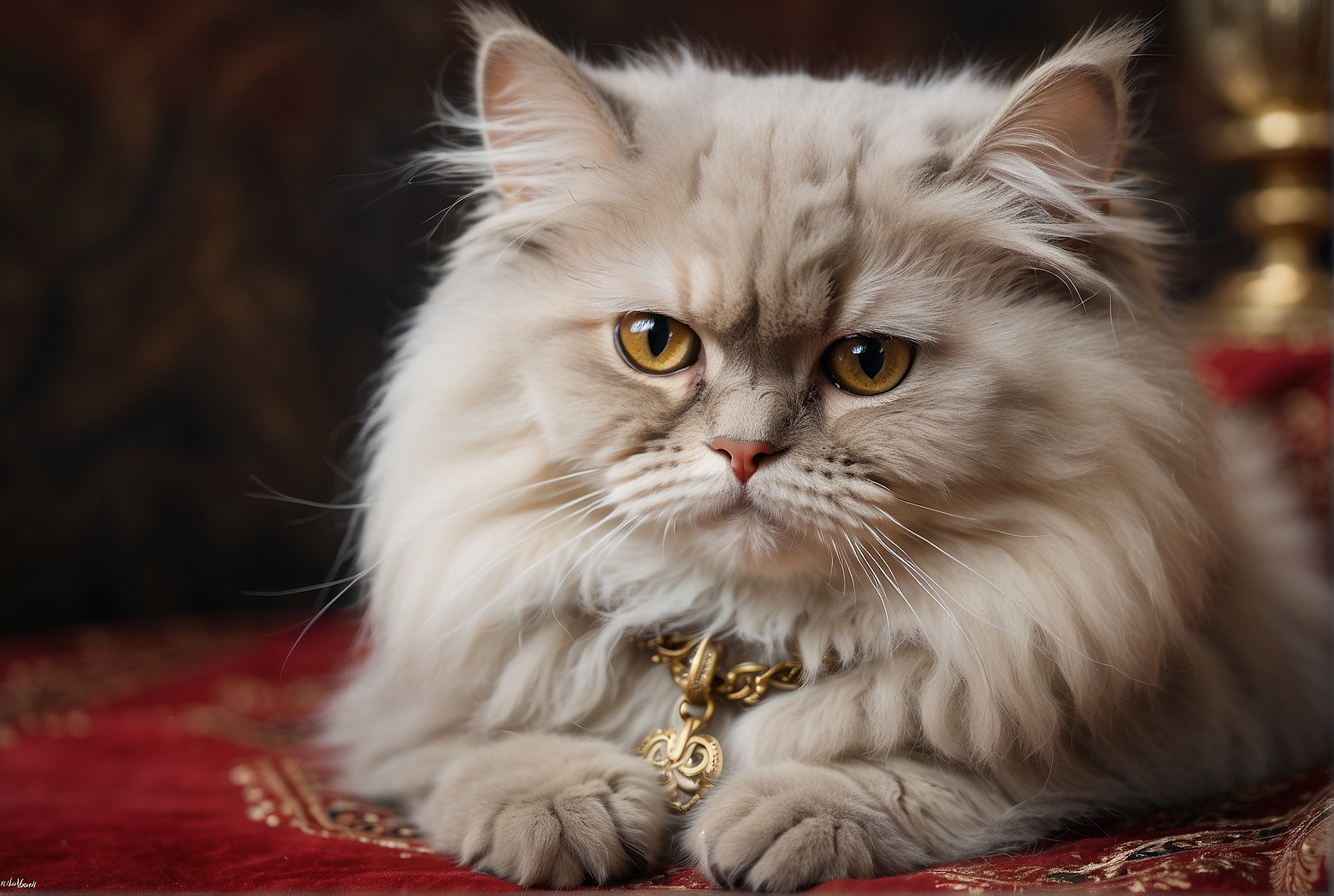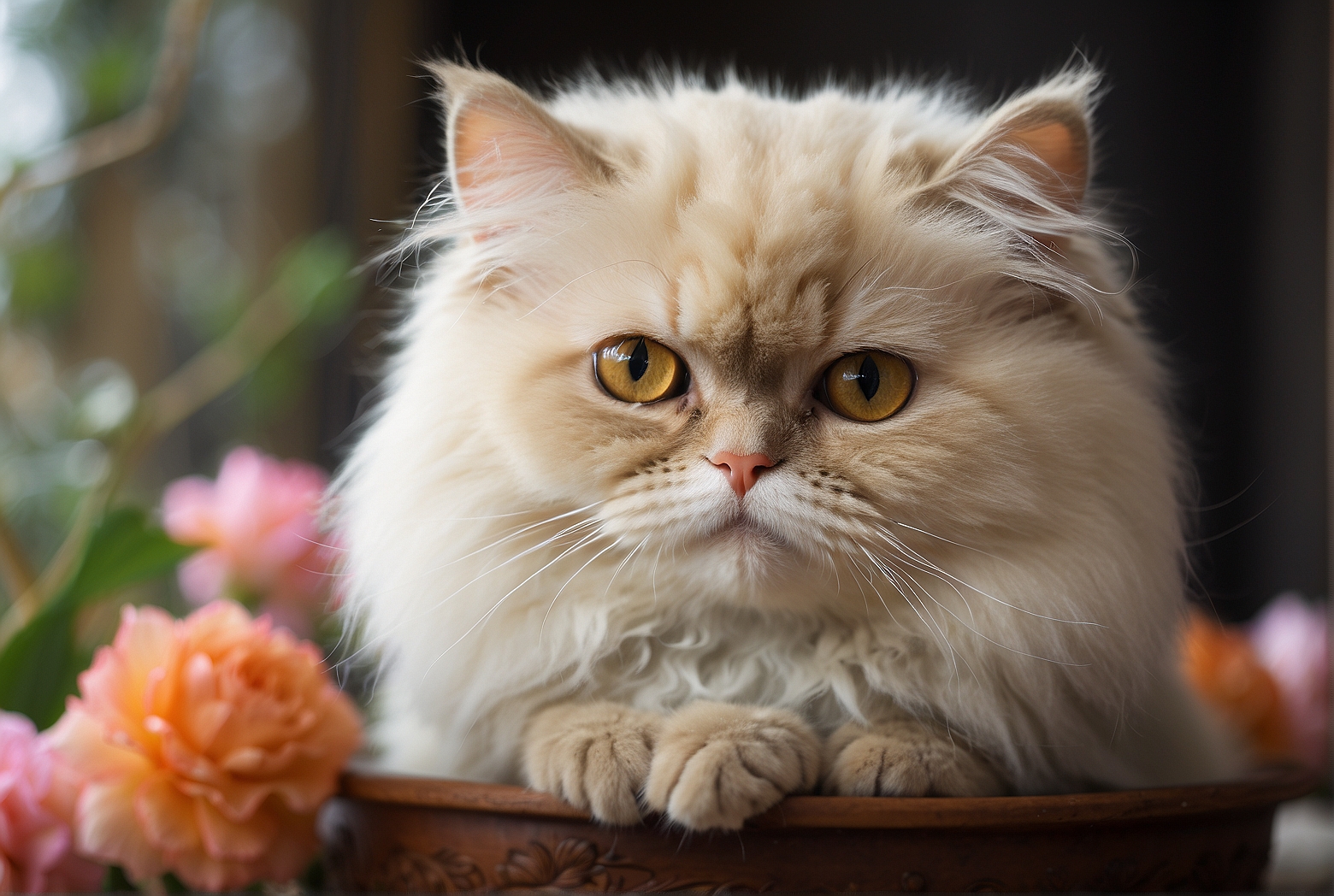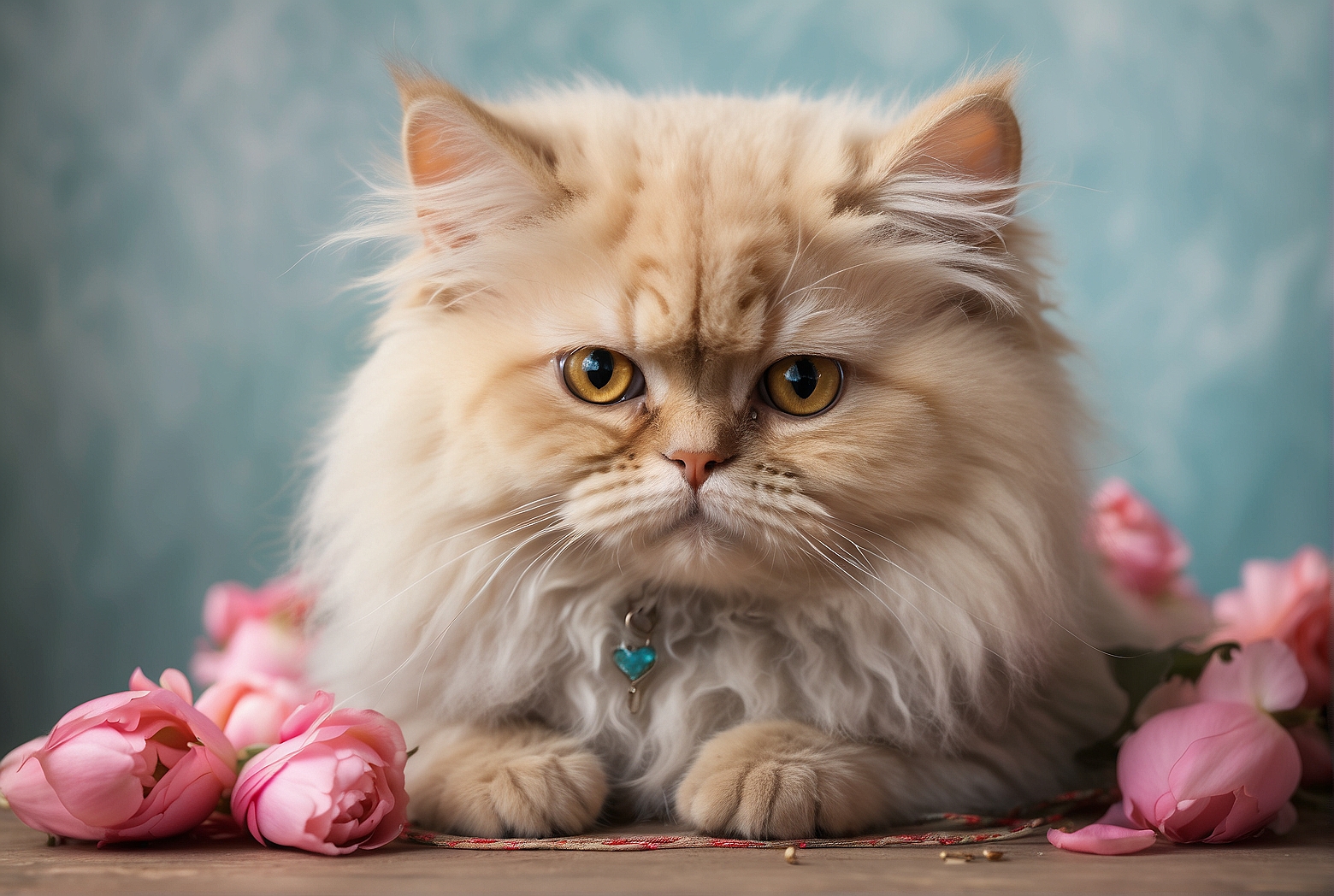Have you ever wondered why Persian cats come with a hefty price tag? It turns out that there are several factors that contribute to their high cost. From their stunning appearance to their luxurious coats, Persian cats are known for their beauty and elegance. In addition, their breeding process involves careful selection to achieve desirable traits, such as a distinctive round face and a calm, gentle temperament. All these factors combined make Persian cats a sought-after breed, leading to their expensive price in the market. So, if you’ve ever been curious about why these feline beauties are so expensive, read on to discover more about the fascinating world of Persian cats.
Purebred and Pedigree
Limited availability
One of the reasons why Persian cats are expensive is because of their limited availability. Persian cats are a popular breed and are in high demand, which means that there are often more people looking to adopt a Persian cat than there are available cats. This limited supply can drive up the price of Persian cats, as breeders are able to charge a premium due to the high demand.
Breed standards
Another factor that contributes to the price of Persian cats is the breed standards that they must adhere to. Persian cats have a specific look and physical features that are outlined in breed standards set by cat associations and organizations. Breeders invest time, effort, and money into breeding cats that meet these standards, which can impact the overall cost of the cats.
Pedigree documentation
Pedigree documentation is another factor that adds to the cost of Persian cats. Pedigree documentation is essentially a record of the cat’s ancestry, showing their lineage and any titles or awards that their ancestors may have received. This documentation helps to establish the cat’s purebred status and can increase their value. Maintaining pedigree documentation requires specific record-keeping and can be time-consuming for breeders, which is reflected in the price of Persian cats.
Breeding Costs
High demand
The high demand for Persian cats necessitates specialized breeding, which can significantly increase the breeding costs. Breeders must carefully select mating pairs to ensure that the resulting kittens meet breed standards and have desirable traits. This process often involves extensive research and planning, which requires both time and financial resources.
Specialized breeding
Breeding Persian cats involves specialized techniques and considerations. Due to the unique features of Persian cats, such as their distinctive coat and facial structure, breeders must carefully pair cats to ensure that the desired traits are passed down to the offspring. This often requires additional effort and dedication on the part of the breeder, which can contribute to the overall cost of Persian cats.

Health testing
Health testing is an important aspect of responsible breeding, and Persian cats are no exception. Breeders invest in health testing to ensure that their cats are free from hereditary diseases and genetic conditions. These tests include screenings for common Persian cat health concerns such as polycystic kidney disease (PKD) and hypertrophic cardiomyopathy (HCM). The cost of these health tests adds to the breeding costs and is reflected in the price of Persian cats.
Cost of stud service
Breeders often need to use a male cat, known as a stud, to mate with their female cats to produce kittens. Stud services can be quite expensive, especially if the stud cat has a prestigious pedigree or has achieved recognition in cat shows. The cost of stud service is factored into the breeding costs and is one of the reasons why Persian cats can be more expensive compared to other breeds.
Grooming Needs
Long, luxurious coat
Persian cats are known for their long, luxurious coats, which require regular and attentive grooming. The length and texture of their fur make them susceptible to matting and tangling, which can be uncomfortable and even painful for the cat if not properly managed. The grooming needs of Persian cats can be time-consuming and require regular maintenance to keep their coat in pristine condition.
Regular grooming
To maintain the beauty and health of their coat, Persian cats require regular grooming. This includes daily brushing to prevent matting and combing to keep their fur tangle-free. Regular grooming sessions help to distribute the natural oils in their coat, promoting a healthy and shiny appearance. Grooming also provides an opportunity to check for any skin issues or abnormalities, ensuring the overall well-being of the cat.
Professional grooming
While regular grooming at home is essential, many Persian cat owners also opt for professional grooming services. Professional groomers have the expertise and specialized tools necessary to handle the grooming needs of Persian cats. They can offer services such as bathing, trimming, and styling the cat’s fur to enhance its appearance. The cost of professional grooming services adds to the overall expenses of owning a Persian cat.
Specialized grooming products
In addition to regular grooming and professional grooming services, Persian cats may require specialized grooming products. These products are designed to address the specific needs of the cat’s coat, such as shampoos and conditioners formulated to enhance the coat’s shine and texture. The cost of these specialized grooming products can contribute to the overall expenses of owning a Persian cat.

Health Concerns
Genetic predispositions
Like many purebred cats, Persian cats are prone to certain genetic health conditions. Some common health concerns in Persian cats include polycystic kidney disease, respiratory issues, and dental problems. These conditions may require regular medical attention, specialized diets, or even surgical interventions. The potential for increased healthcare needs can impact the overall cost of owning a Persian cat.
Regular medical check-ups
To ensure the well-being of a Persian cat, regular medical check-ups with a veterinarian are crucial. Routine examinations, vaccinations, and preventive care measures can help detect any health issues early and provide appropriate treatment. These check-ups are an ongoing expense that Persian cat owners should consider when determining the cost of owning a Persian cat.
Vaccinations
Vaccinations are an essential part of maintaining the health of any cat, including Persian cats. Routine vaccinations help protect against common viral and bacterial diseases, such as feline viral rhinotracheitis, calicivirus, and panleukopenia. Keeping up with the necessary vaccinations adds to the overall healthcare costs of owning a Persian cat.
Specialized healthcare needs
In addition to routine medical care, Persian cats may require specialized healthcare needs. This can include regular grooming under anesthesia, dental cleanings, or specialized diets tailored to address their specific health concerns. These additional healthcare needs contribute to the overall cost of owning a Persian cat and should be factored into the budget.
Show Quality
Conformation to breed standards
Persian cats that conform closely to the breed standards set by cat associations and organizations are considered show quality. These cats exhibit the physical characteristics, coat type, and facial structure that are highly valued in the show ring. Show quality Persian cats usually command a higher price due to their superior conformation to breed standards.
Distinctive appearance
Persian cats have a distinctive appearance that sets them apart from other cat breeds. Their round face, large eyes, and abundant coat contribute to their unique charm. Cats with a particularly striking appearance, such as those with rare coat colors or patterns, may be considered more desirable for showing and can fetch a higher price.
Good temperament
In addition to physical appearance, a Persian cat’s temperament plays a crucial role in determining its show quality. Show quality Persian cats should have a good temperament, being friendly, calm, and comfortable with handling. Cats with a pleasant and sociable personality are often preferred in the show ring and may command a higher price.
Potential for show wins
When purchasing a show quality Persian cat, buyers are investing in their potential for success in the show ring. Show quality Persians come from lines that have proven success in competitions. The breeder’s reputation and the cat’s pedigree documentation may also contribute to the cat’s potential for winning in shows. These factors can increase the price of show quality Persian cats.
Selective Breeding
Produce desirable traits
Selective breeding is a practice used by responsible breeders to produce cats with desirable traits. Breeders carefully choose mating pairs that possess the desired physical characteristics, temperament, and health traits to pass down to their offspring. This process requires knowledge, experience, and expertise, all of which add to the cost of producing high-quality Persian cats.
Eliminate undesirable traits
Selective breeding also involves striving to eliminate undesirable traits from the breed. This can include addressing health issues, such as breeding away from genetic conditions, as well as working towards improving physical attributes or temperament. The effort involved in trying to eliminate these undesirable traits adds to the cost of breeding Persian cats.
Focused breeding programs
Many reputable Persian cat breeders have focused breeding programs aimed at producing cats that meet or exceed breed standards. These breeders dedicate themselves to improving the breed, focusing on specific traits, characteristics, or health concerns. The dedication, time, and effort put into these focused breeding programs contribute to the higher cost of Persian cats.
Import Costs
Transportation expenses
Importing Persian cats from reputable breeders outside of your country can incur significant transportation expenses. Shipping a cat safely and comfortably, whether by air or other means, requires specialized arrangements and often comes with a high price tag. These transportation expenses are passed on to the buyer and contribute to the overall cost of owning an imported Persian cat.
Customs fees and taxes
When importing a Persian cat, customs fees and taxes are another cost to consider. Depending on the country of origin and the destination, these fees can vary. It’s important to research and understand the customs regulations and potential additional charges associated with importing a Persian cat to avoid any surprises or unexpected costs.
Quarantine requirements
Quarantine requirements are often imposed when importing animals to prevent the spread of diseases. These requirements can vary depending on the countries involved, and may include a period of isolation for the cat upon arrival. The cost of complying with quarantine requirements, including any necessary veterinary procedures or additional boarding expenses, adds to the overall import costs of Persian cats.
Association Memberships
Registration fees
Breeders who are members of reputable cat associations often pay annual registration fees. These fees support the association’s programs, initiatives, and services, such as breed health research, breed standards development, and show organization. Choosing a breeder who is a member of a recognized association demonstrates their commitment to responsible breeding practices and can help ensure the quality of the Persian cat you are considering purchasing.
Participation fees
Participating in cat shows and competitions is a popular activity for many Persian cat owners. However, there are often participation fees associated with entering a cat in shows. These fees contribute to the prize pool, show expenses, and administrative costs. Breeders who actively show their cats may pass on some of these costs to the buyers of their show quality Persian cats.
Access to breeding networks
Membership in cat associations often provides breeders with access to a network of other breeders and resources. Breeders may collaborate with one another, exchange knowledge and information, or even co-own breeding cats. This network can be invaluable in improving breeding programs and staying up-to-date with the latest advancements in the field. The cost of association memberships helps breeders maintain and access these valuable networks.
Breeder Reputation
Established reputation
The reputation of a breeder can significantly impact the price of Persian cats. Established breeders who have a long history of producing high-quality cats with desirable traits and excellent temperament can command a higher price for their kittens. Reputation is built through years of dedication, experience, and consistently producing healthy, well-socialized Persian cats.
Quality breeding practices
Breeders who prioritize quality breeding practices often invest more time, effort, and resources into their breeding programs. This includes careful selection of mating pairs, health testing, and proper care and socialization of kittens. These breeders are committed to maintaining the integrity of the breed and ensuring the best possible outcome for each kitten they produce, which is reflected in the higher price.
Ethical standards
Ethical breeders prioritize the well-being and health of their cats above all else. They adhere to responsible breeding practices, such as not overbreeding their cats and prioritizing the overall welfare of their animals. Ethical breeders go above and beyond to ensure that their cats are well-cared for and placed with loving and responsible owners. The higher cost of Persian cats from ethical breeders supports these principles.
References and reviews
The reputation of a breeder is often bolstered by positive references and reviews from past buyers. Happy customers who have had positive experiences with a particular breeder can speak to the quality of their cats, the breeder’s professionalism, and the overall satisfaction with the purchasing process. These references and reviews provide further assurance to potential buyers and may justify the higher cost of Persian cats from reputable breeders.
Limited Litters
Health considerations
Responsible breeders prioritize the health and well-being of their cats above all else. As a result, they may limit the number of litters their cats produce to ensure that the mother cat has enough time to recover between pregnancies. Limiting the number of litters helps prevent potential health complications for the mother cat and improves the overall health of the kittens. However, this limited production can contribute to the higher cost of Persian cats.
Breeder’s availability
The availability of the breeder can also impact the number of litters produced. Many reputable breeders spend significant time and effort caring for their cats and ensuring the well-being of their kittens. As a result, they may limit the number of litters to make sure they can provide adequate attention and care to each kitten. This limited availability can increase the price of Persian cats.
Selective breeding decisions
Selective breeding decisions are another reason for limited litters. Breeders carefully choose mating pairs to produce kittens with the desired traits and characteristics. This process involves evaluating the pedigree, health history, and physical attributes of potential parents. The careful consideration and selection process can result in fewer litters being produced, which impacts the availability and ultimately the price of Persian cats.
In conclusion, there are several factors that contribute to the cost of Persian cats. Limited availability, breed standards, and pedigree documentation all play a role in determining the price of these cats. The high demand for Persian cats and the specialized breeding required to produce them also add to the cost. Grooming needs, health concerns, show quality, selective breeding, import costs, association memberships, breeder reputation, and limited litters further influence the price of Persian cats. Understanding these factors can help potential owners make an informed decision and appreciate the value that comes with owning a Persian cat.
